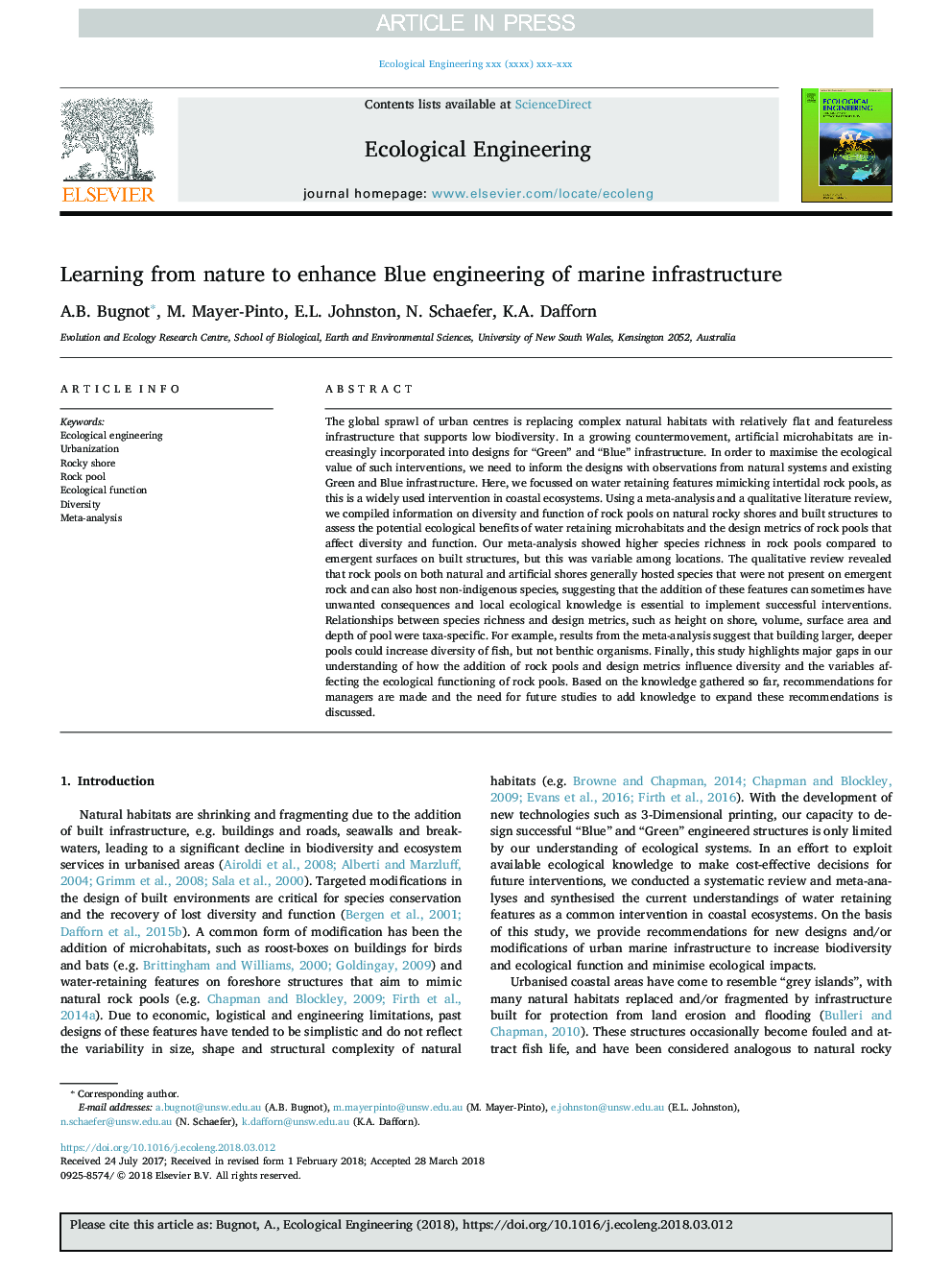| Article ID | Journal | Published Year | Pages | File Type |
|---|---|---|---|---|
| 10110145 | Ecological Engineering | 2018 | 11 Pages |
Abstract
The global sprawl of urban centres is replacing complex natural habitats with relatively flat and featureless infrastructure that supports low biodiversity. In a growing countermovement, artificial microhabitats are increasingly incorporated into designs for “Green” and “Blue” infrastructure. In order to maximise the ecological value of such interventions, we need to inform the designs with observations from natural systems and existing Green and Blue infrastructure. Here, we focussed on water retaining features mimicking intertidal rock pools, as this is a widely used intervention in coastal ecosystems. Using a meta-analysis and a qualitative literature review, we compiled information on diversity and function of rock pools on natural rocky shores and built structures to assess the potential ecological benefits of water retaining microhabitats and the design metrics of rock pools that affect diversity and function. Our meta-analysis showed higher species richness in rock pools compared to emergent surfaces on built structures, but this was variable among locations. The qualitative review revealed that rock pools on both natural and artificial shores generally hosted species that were not present on emergent rock and can also host non-indigenous species, suggesting that the addition of these features can sometimes have unwanted consequences and local ecological knowledge is essential to implement successful interventions. Relationships between species richness and design metrics, such as height on shore, volume, surface area and depth of pool were taxa-specific. For example, results from the meta-analysis suggest that building larger, deeper pools could increase diversity of fish, but not benthic organisms. Finally, this study highlights major gaps in our understanding of how the addition of rock pools and design metrics influence diversity and the variables affecting the ecological functioning of rock pools. Based on the knowledge gathered so far, recommendations for managers are made and the need for future studies to add knowledge to expand these recommendations is discussed.
Related Topics
Life Sciences
Agricultural and Biological Sciences
Ecology, Evolution, Behavior and Systematics
Authors
A.B. Bugnot, M. Mayer-Pinto, E.L. Johnston, N. Schaefer, K.A. Dafforn,
